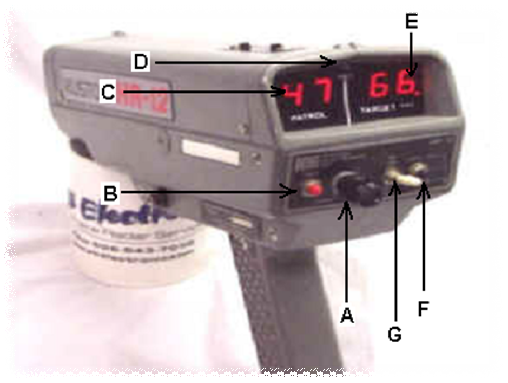The audio Doppler tone and the LED read out are...
Letter ‘A’ on the Kustom HR-12 Unit is the _________.
The term "RADAR" is an acronym that stands for ___________.
From the optons listed below, what information would not be...
The distance from the beginning of a peak to the bottom of a valley is...
The fan reading will disappear when a target comes ________and...
The three main functions in trigonometry are _____, ______ and...
There is no Doppler effect when the source or listener is at the...
Cosine factor is always in favor of the ________.
While conducting an external calibration test using a...
Do to the accuracy of the RADAR gun, it is not necessary for a...
Radio waves travel at 186,000 miles per second (mps).
A RADAR signal will go on for ever unless it is_________, ________ or...
The ten significant court cases which pertain to the use of...
Letter ‘E’ on the Kustom HR-12 Unit is the __________.
When the observer moves with the same velocity towards or away...
What section of the U.S. Code do VA Police Officers receive their...
What form should be used if issuing a written warning for a violation?
When the source of sound moves towards or away from an observer...
At what frequency does a K-Band RADAR operate?
How many drivers will get a speeding ticket this year?
VA regulations 38 C.F.R. _______ dictates the Schedule of...
On the ‘Offense Description’ portion of the UDSC, what...
This court case the court ruled that an officer is not required...
When RADAR unit produces radar readings on vehicles behind the...
When several reflected near-equal strengths but varying...
Cosine is the calculation is of one side of a triangle _______ by...
What sub-section is speeding found on the Schedule of Offenses...
Frequency refers to the number of _________ sent out in one...
Based on the __________, if the RADAR is positioned at an angle...
A tuning fork is a(n) ___________ formed from a U-shaped bar of...
When speed increases from ________, the energy released in a crash...
What year did Christian Doppler first come up the theory that...
The internal calibration test button should only be used by an...
RADAR technology is based on the laws of physics and was first...
A frequency often times is referred to as a _________.
A traffic RADAR beam can transmit how many waves per second?
When the RADAR locks onto a large moving object in front of the...
The court case that ruled that the radar device was not proved...
Approximately how many reported crashes occurred in 2004?
What is the range of a RADAR unit when operated in the stationary...
When the RADAR is looking past a small reflection in the...
During certain instances, the RADAR will generate a 'false' reading.
Based on the slide presentation, which state was not listed in...
According to the NHTSA, what persentage of all motorcycle...
When the patrol car is at the crest of a hill, it is very easy...
In this court case the court ruled that unit must be tested with...
















